What to Do in Astoria, Oregon: A Complete Guide
There is a surprising amount of American history (not to mention Oregonian history) that took place in Astoria, Oregon. Before our latest trip, we had no idea that it was an important – and very much contested – player in the fur trade that drove the War of 1812, and that it’s home to the only mainland American military base to come under fire from a foreign adversary since that same war.
Oh, and the Goonies was filmed here, which probably also counts as “important” for a lot of people.
Unlike some of the other towns on the northern Oregon Coast that feel more sanitized, like Seaside and Cannon Beach, Astoria has done a good job of retaining the character and, for lack of a better term, grittiness (and to be clear, we mean that in the best possible way) that has made it an important piece of Oregon history.
Really, American history too, because Lewis and Clark spent a winter at Fort Clatsop just a few miles south of Astoria before heading back east, having completed their mission of finding a route to the Pacific Ocean via the Missouri River.
We’ve been to Astoria a couple of times now, and our latest trip really opened our eyes to just how special and, frankly, fascinating the charming little coastal town at the northwestern corner of Oregon really is.
At one point, because of its strategic location at the mouth of the Columbia River where it flows into the Pacific, it was being marketed as “the New York City of the West.”
While it didn’t quite live up to that level of hype, we very much think it’s a place worth visiting, whether you’re using it as a starting (or ending) point for an Oregon Coast road trip, or are trying to find a destination for your next weekend getaway from Portland with a mix of beaches, coastal views, and an impressive array of local breweries.
Either way, let’s talk about our top recommendations in terms of things to do in Astoria, Oregon.
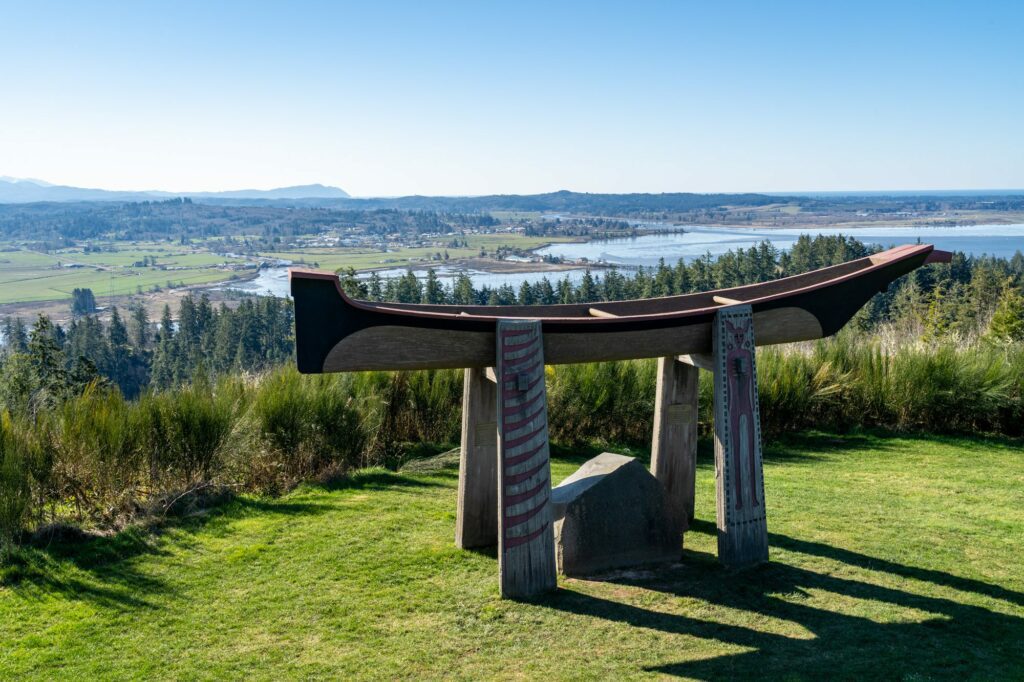
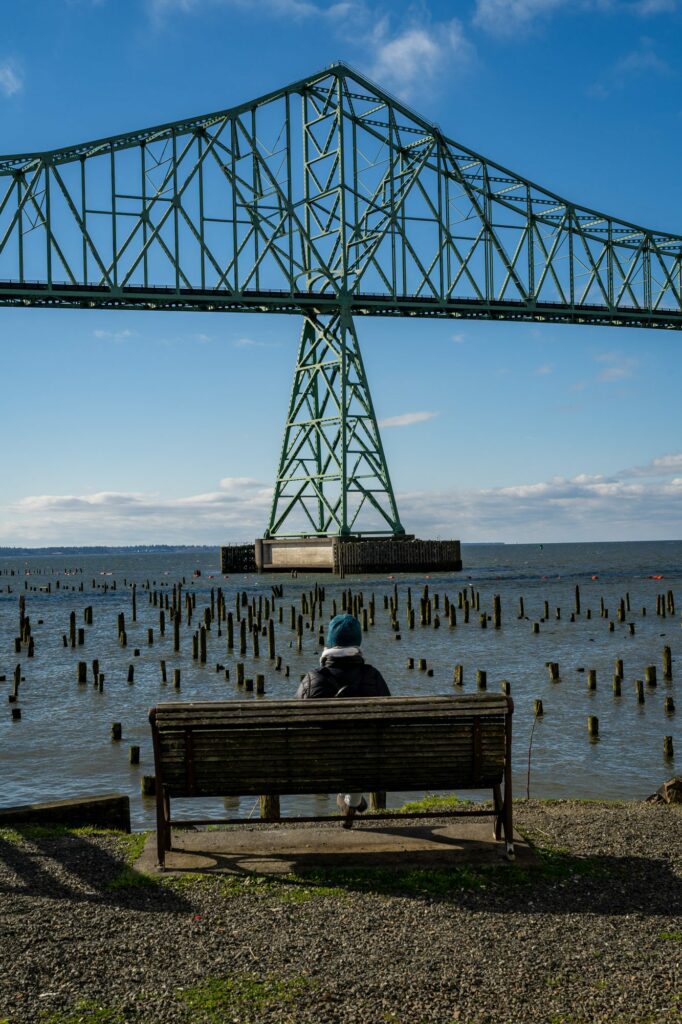
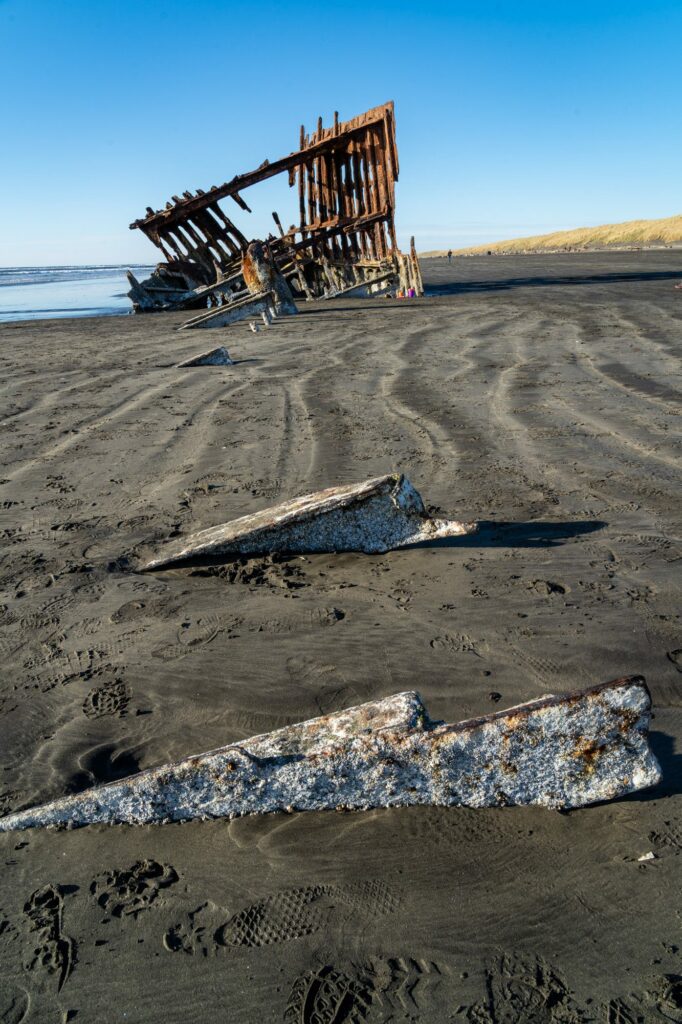
Disclaimer: Some of the links in this post, like hotel links, are affiliate links, meaning at no additional cost to you, we make a little bit of money if you click through and book. That being said, we would never recommend something to you that we don’t stand behind 100%.
The Best Things to Do in Astoria, Oregon: A Complete Guide
Below, you’ll find our perspective on what to do while you’re in Astoria.
Of course, this is not an exhaustive list of every single thing you could possibly do. Instead, it’s our perspective on what you should do based on our own several trips to Astoria.
If you’re planning to spend a night or two in Astoria, we’d highly recommend the Norblad Hotel, which is right in the heart of town (across the street from Fort George Brewery, and on the same block as a smaller local brewery) and has budget-friendly rooms with quirky décor and friendly staff.
We stayed there on our last trip for a few nights, and would absolutely stay there again in the future.
Climb the Astoria Column for an Incredible View
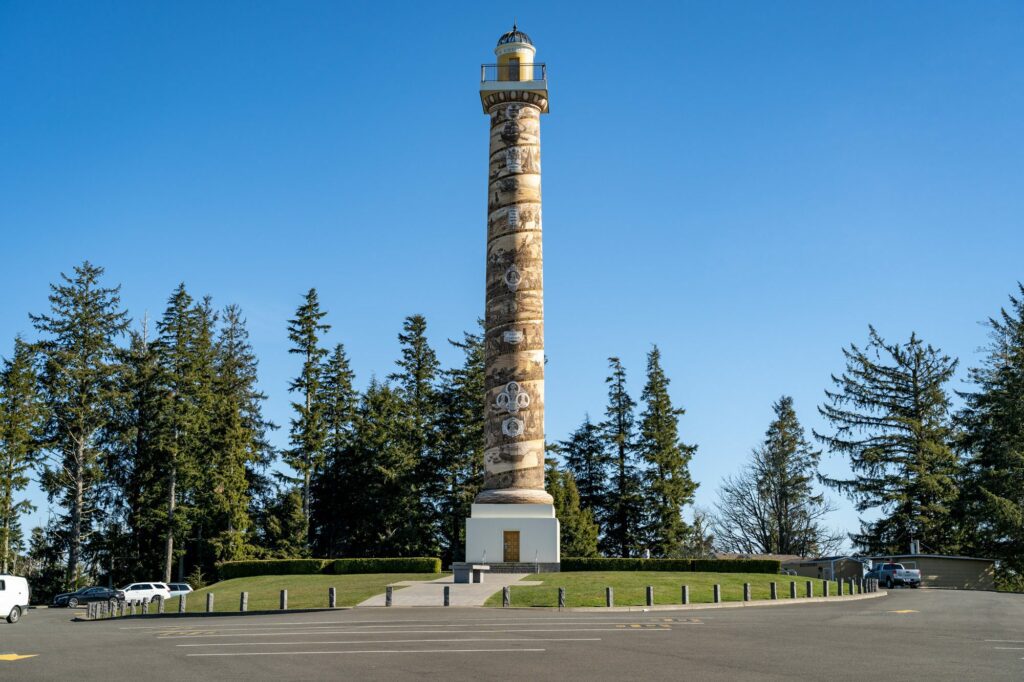
The Astoria Column is perched up on the hill above Astoria, and has sweeping views of the town, the Columbia River, and the Astoria-Megler Bridge from the top.
The Column was built in 1926 by the Astor family, who largely financed huge pieces of Astoria’s development in hopes of making it a “New York City on the West Coast.”
On the outside, there is a continuous mural depicting major events in the history of Oregon, which is pretty cool but hard to really take in without getting dizzy. Lucky for you, you can see it online here, complete with helpful historical context about what the images mean.
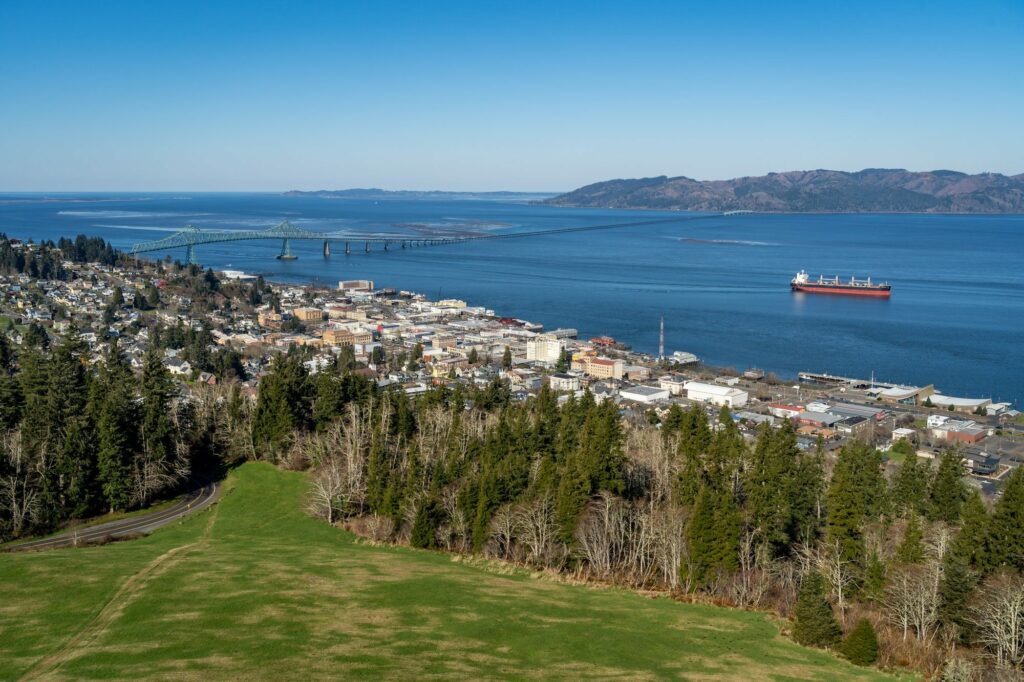
Climbing the column is completely free – only your sweat is required for payment with 160-something steps between you and the top – but it does cost $5 to park in the lot at the base of the column.
To avoid the parking fee, get in a nice hike, and see a giant Sitka Spruce, take the Cathedral Tree Trail from town up to the Astoria Column and back.
Explore Fort Stevens State Park
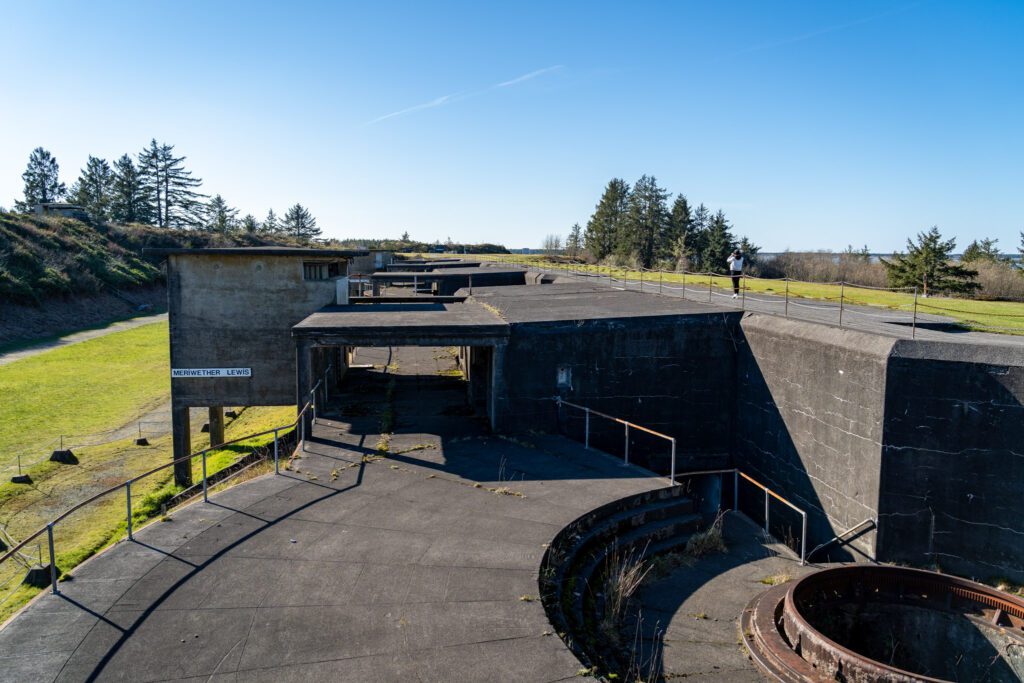
Fort Stevens State Park occupies great real estate at the northwestern corner of Oregon, where the Columbia River meets the Pacific Ocean. The fort was constructed at the tail end of the Civil War to prevent enemy ships from gaining access to the Columbia River, and remained in operation until the 1940’s.
Fun(ish) fact: Fort Stevens remains the only military base on the US mainland that has been attacked by a foreign power since the War of 1812. It earned that honor when, on June 12, 1942, a Japanese submarine shelled Fort Stevens for about 16 minutes before retreating.
The park itself is actually pretty big, and there are two places in particular that we’d encourage you to visit as you do some exploring.
The Peter Iredale Shipwreck: Probably the most famous feature of the park, the Peter Iredale ran ashore in 1906 as it was trying to navigate the famously treacherous waters of the mouth of the Columbia River (this whole stretch of coast up through Washington was apparently known as the “Graveyard of the Pacific”), and has been there since.
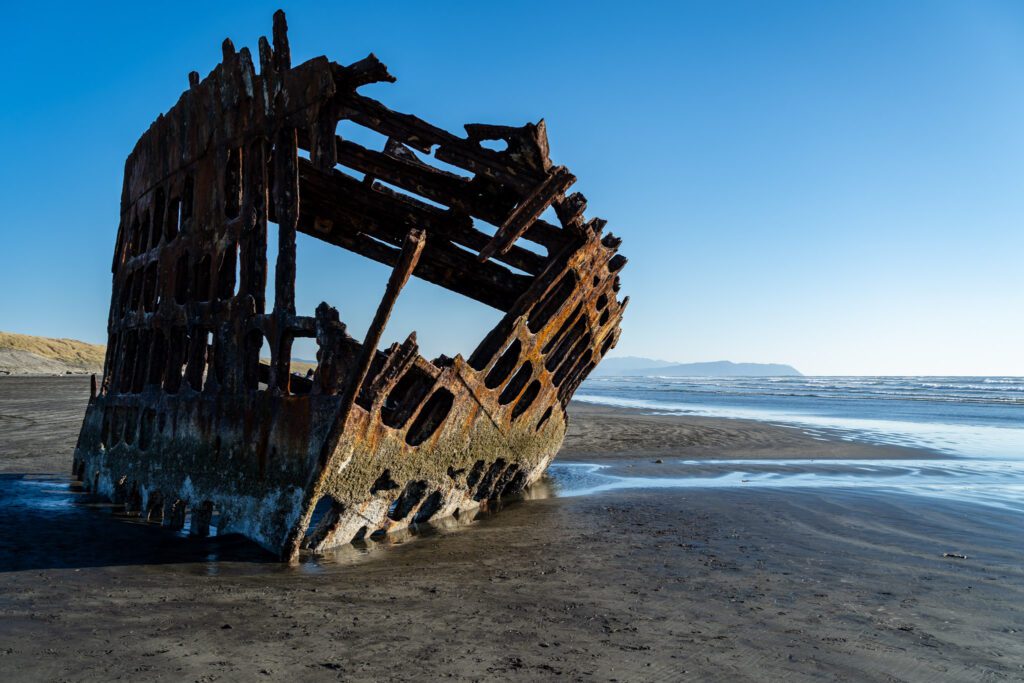
It’s right on a long, sandy stretch of beach – which is a welcome change from the rocky beaches we have up in Washington – and it’s a lovely place to watch the sunset.
The Northwest Corner of Oregon: Up to the north, you’ll find Clatsop Spit, which marks the northwestern-most point in the state of Oregon.
There are a couple of parking areas up on the spit, and we thought parking lot C (here on Google Maps) was the best because of the view of the beach and coast to the south from the tower near the parking lot.

The historical section of the park is cool if you’re a) into military history or b) haven’t seen very similar forts in both Washington State and California before.
Explore the Booming Craft Beer Scene
Everyone talks about San Diego and Portland as places with insanely high numbers of breweries per capita, but after our visit I’m fairly certain that Astoria must be the highest in the country.
We counted at least four breweries (and one cidery), which means you’ll have plenty of options in terms of places to grab a cold beer.
Fort George: This is our favorite of the bunch, and they have a huge taproom taking up most of an entire city block with multiple levels – including an open-air rooftop. They have a rotating selection of their beers on tap, along with a cider or two and (usually) gluten free beer in cans (which I very much appreciate, as someone with Celiac Disease who can’t have regular beer).
Buoy Beer: The other popular spot right on the water, though they were closed when we were in town last and have a more underwhelming non-beer selection.
Astoria Brewing Company: The OG brewery in Astoria, they started brewing beer in 1997 and have a nice industrial space on the riverfront walk.
Bridge & Tunnel Bottleshop & Taproom: If you’re in the mood to try a wider variety of beers – some local, some from other parts of Oregon and Washington, head here. They also have an impressive cider selection, and a bunch of different beers and ciders in cans and bottles to enjoy later.
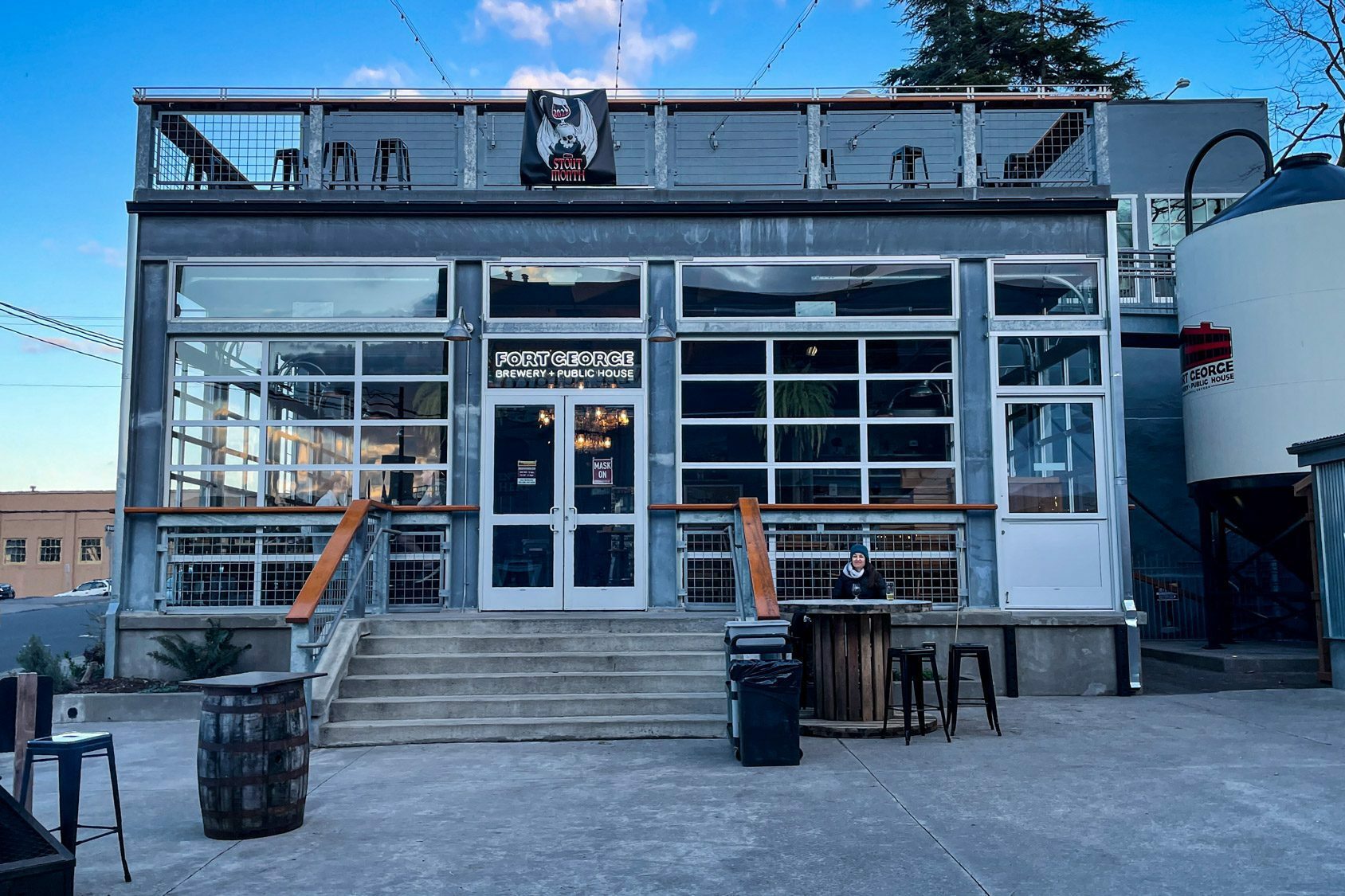
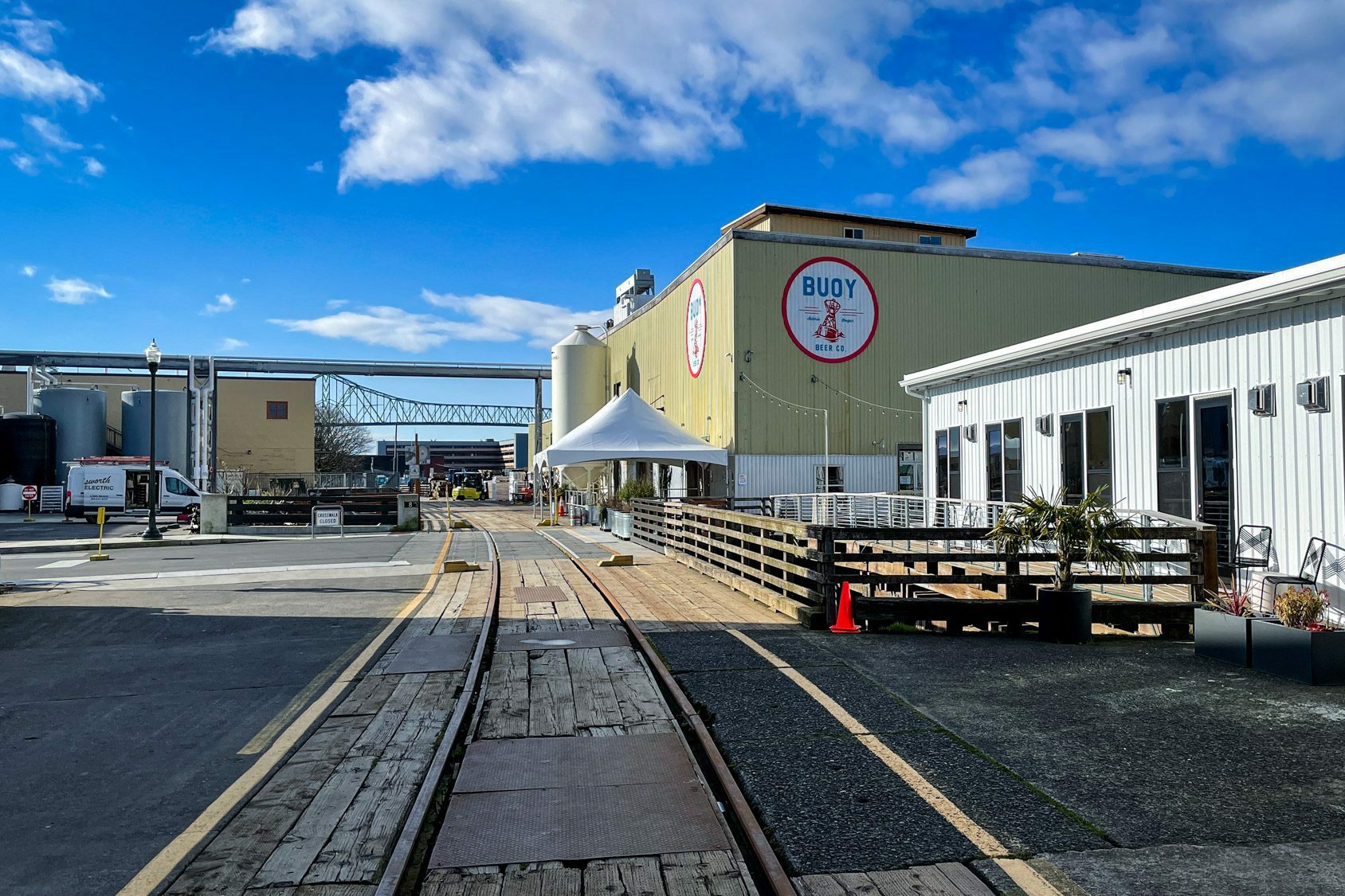
Walk in Lewis and Clark’s Footsteps
Astoria was first put on a map (by the United States government, anyway) by the famous explorers Lewis and Clark, who were commissioned by Thomas Jefferson to find the Northwest Passage that would connect them to the Pacific Ocean for direct trading routes.
At the time, it wasn’t called Astoria, but Fort Clatsop, and it was about five miles southwest of the city as we know it today. This is where the expedition spent three (miserable, it sounds like) months experiencing a very wet Pacific Northwest winter in 1806 before triumphantly returning to St. Louis, their mission complete.
As someone who grew up in the Pacific Northwest, I laughed when one of the explorers wrote in their journal something like “it rained every day but twelve!” (they were there for 106 nights) and I kind of went “yeah, sounds like a pretty typical winter.”
Today, Fort Clatsop is part of a complex of parks called Lewis and Clark National Historical Park, which includes nearby Fort Stevens and Ecola State Parks, as well as Fort Clatsop and Cape Disappointment on the other side of the Columbia.
They all mark important pieces of the history and lore around Lewis and Clark’s fateful expedition up the Missouri River.
We’d focus your time on two pieces of living history: Fort Clatsop and the Fort-to-Sea Trail.
Fort Clatsop
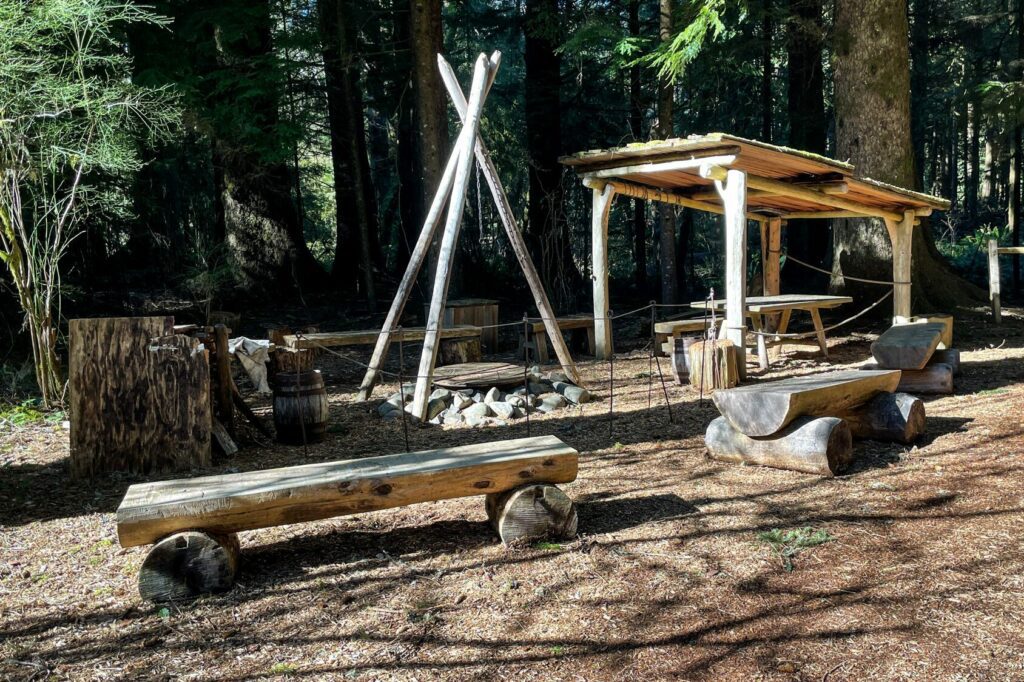
First is Fort Clatsop, which was under construction when we were last there in the winter. When we walked into the Visitor Center, we were immediately greeted by a friendly volunteer who asked us what we knew about Lewis and Clark.
I replied that I knew nothing, having forgotten it all shortly after learning about it in 4th grade or so, and he started a lovely recounting of their journey from St. Louis up to Oregon.
He told us how they were utterly unprepared for mountain crossings (like the Rockies and Cascades), and were flabbergasted by the wetness of the Pacific Northwest in the winter (Alysha can relate). Then he pointed us to the informational exhibit they have right there in the Visitor Center, which is worth taking a few minutes to peruse before you head out to the main attractions.
Outside, make your way to the replica of Fort Clatsop. If you’re here anytime other than the winter, they usually have some fun interactive exhibits where park employees are dressed up in garb of the times and interacting with visitors.
Fort Clatsop is covered by an America the Beautiful Pass, or costs $10 per person to visit. If you’re planning a broader road trip down the coast, it’s also covered by the Oregon Coast Passport.
The Fort-to-Sea-Trail
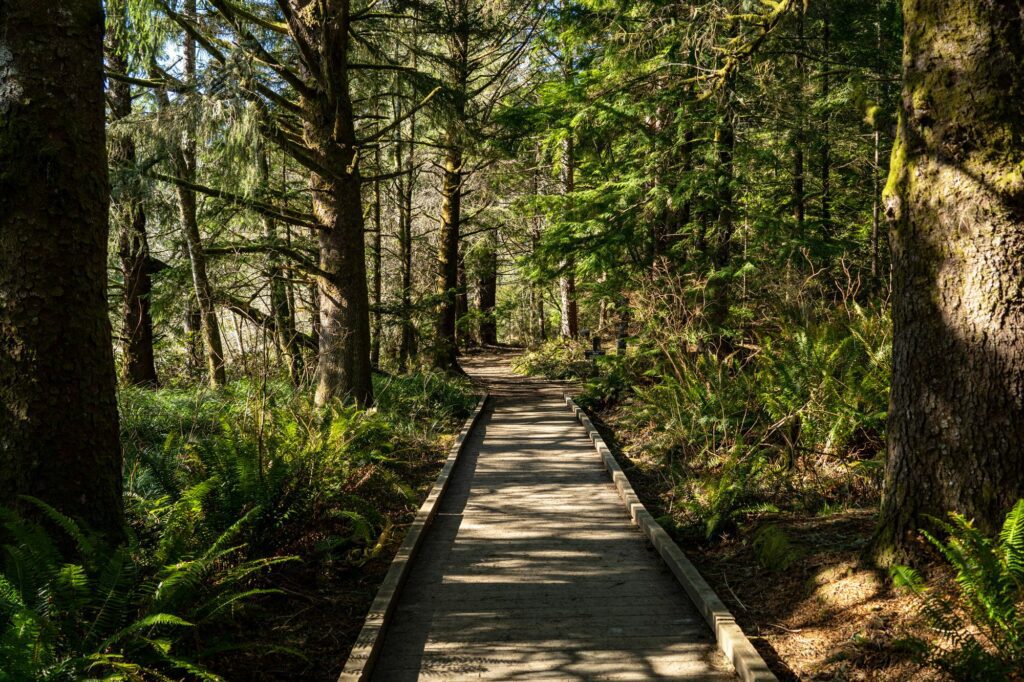
This trail is, well, exactly what it sounds like. It’s the path from Fort Clatsop out to the Pacific Ocean (Sunset Beach, to be exact) that mirrors the path that members of the expedition took between the two places.
Unfortunately, the hike isn’t super accessible because it’s 6.5 miles one way between the fort and the coast. That makes it 13 miles round trip, which is really far for most people.
The first three miles or so are the highlight, and that’s probably the part to focus on – you’re going to experience the coast later anyway and you can always drive out to Sunset Beach to see where the trail ends.
Surrounded by towering sitka spruce, which are quintessential Oregon Coast in our minds, you’ll traverse a similar path that the Lewis and Clark expedition followed a couple of centuries ago.
More trail information here.
Wander Along the Water on the Astoria Riverwalk
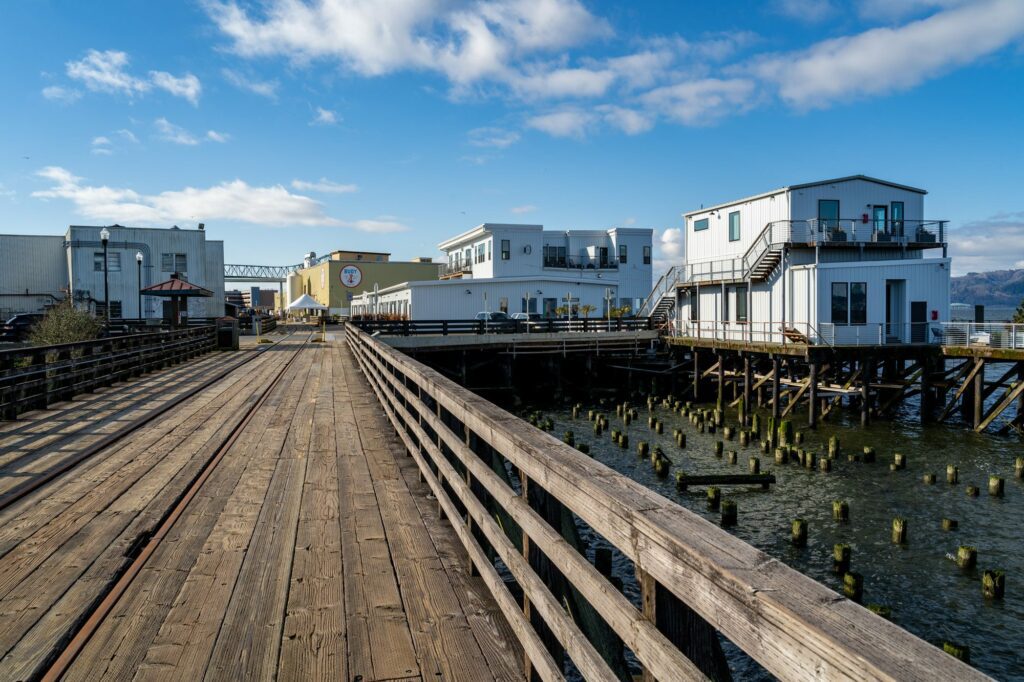
The riverfront in Astoria is full of history, and the official trail stretches 6.4 miles from the trailhead on the eastern end (here on Google Maps), heads under the Astoria-Megler Bridge, and ends at a point on the other side of town. Keep in mind that it’s nearly 13 miles to do it out-and-back.
Our recommendation would be to do a portion of it – the portion from the Columbia River Maritime Museum out to the Astoria-Megler Bridge. It’s a nice walk past old cannery buildings, Buoy Beer, and out to a pretty stellar view of the bridge. Along the way, you’re likely to see (or potentially just hear) sea lions!
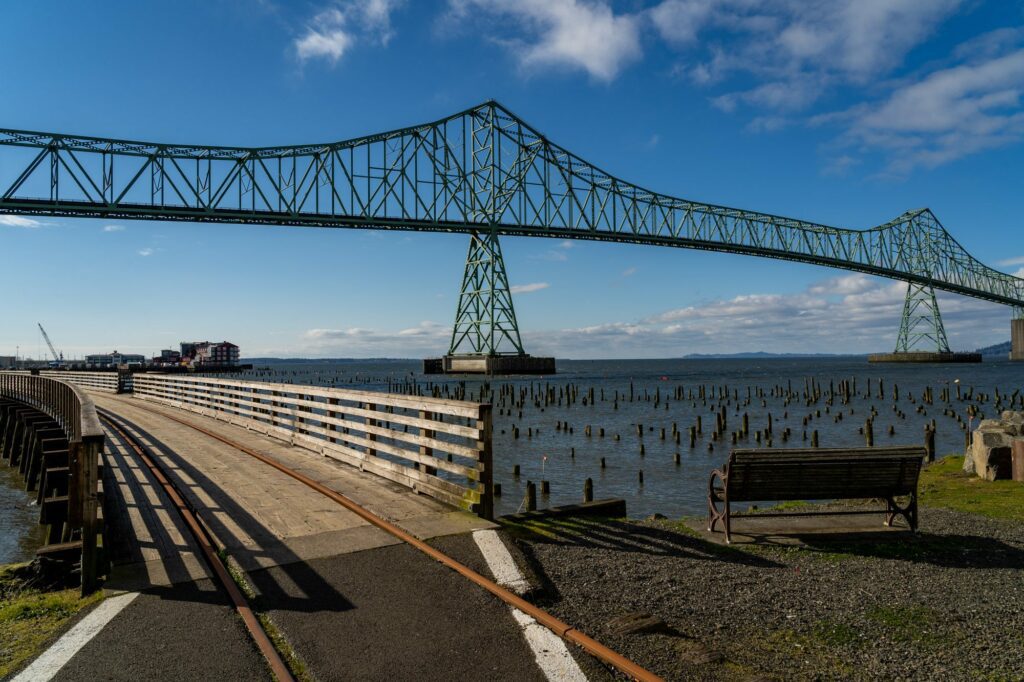
There are some pretty cool interpretive signs along the way that explain the history of Astoria, which we found interesting.
If you’re willing to walk a little further and you want to see the sea lions, head to this dock, which is where they congregate and is about 1.3 miles east of the Maritime Museum.
Alternatively, you can take the Astoria Riverfront Trolley along the promenade. We enjoyed the walk, and the trolley was actually closed when we were in town. This is also a great option if you want to do the full walk, but only one way – it’s only $1 to ride it!
Learn a Thing or Three at One of Astoria’s Museums
There are a bunch of museums in Astoria where you can learn about the history of the city, region, and other more specific things related to Astoria.
We wouldn’t recommend spending your entire time in Astoria hopping from museum to museum, so pick one that you’re really interested in (maybe two) to add to your itinerary.
The Columbia River Maritime Museum
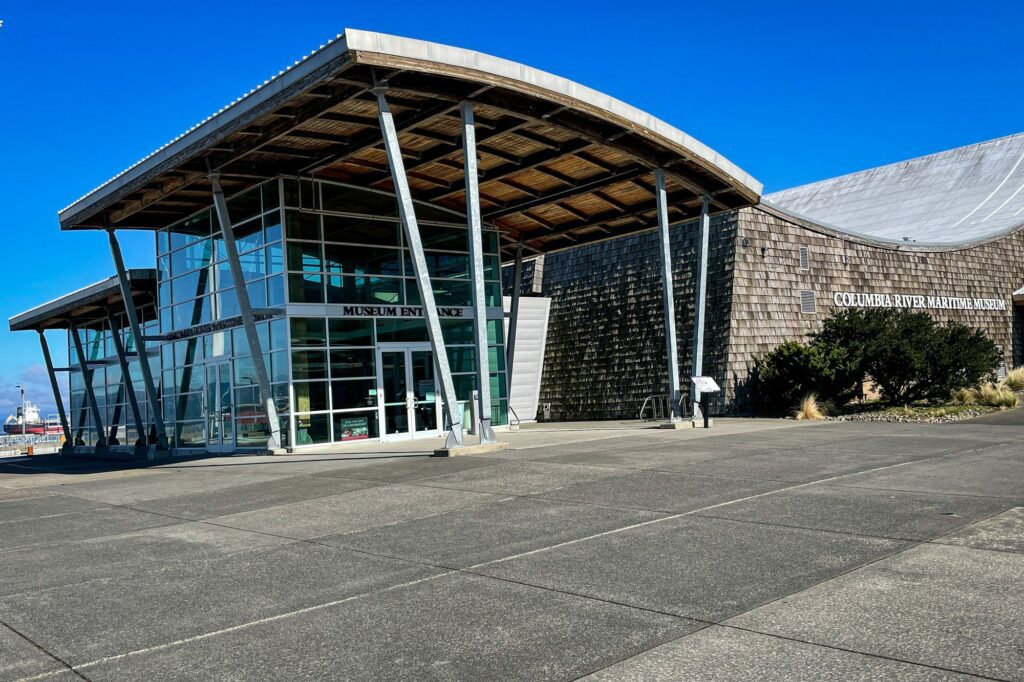
This is the place to go if you’re interested in learning about Astoria’s role on the high seas. Astoria, which is perched at the mouth of the Columbia River where it meets the Pacific Ocean, is perfectly placed for a variety of sea-related endeavors.
The city was started as a trading post on the Pacific as part of the fur trade, after all.
More information on the museum here.
The Heritage Museum
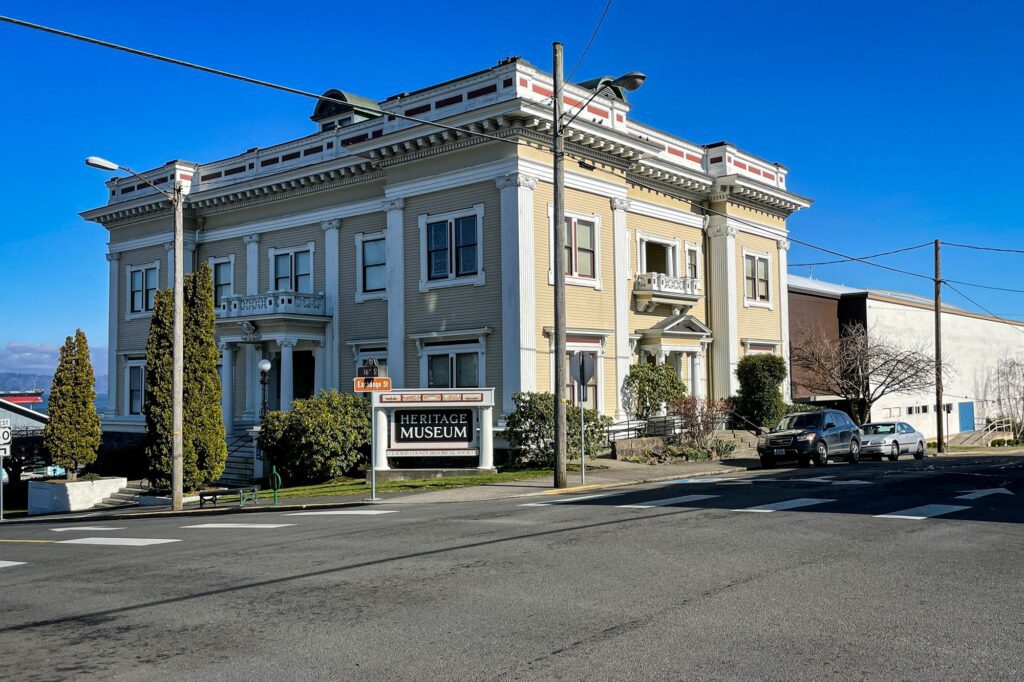
This is the museum we chose, and it’s right in the heart of town in the former courthouse.
It’s curated by the Clatsop County Historical Society, and has a range of exhibits covering the history of Astoria and the surrounding area from pre-Lewis and Clark times all the way through present day, including the 20th Century fire that changed the character of the city forever.
We enjoyed it, and liked the fact that it has enough to keep you busy and interested for 60-90 minutes, and not too much to the point where you feel overwhelmed.
More information can be found here.
The Oregon Film Museum
For whatever reason (I bet if you go to the museum you’ll learn why), Astoria has had a significant number of movies filmed on its streets. From the more well-known movies like the Goonies, to Kindergarten Cop and Free Willy, some of the classics were actually filmed in Astoria.
It’s in the old jailhouse, and has sets from a couple of famous movies – including the Goonies – and some fun interactive exhibits.
More information can be found here.
The Flavel House Museum
We’re not huge “let’s go look at old rich people’s houses!” people, so we definitely skipped this museum.
This is one of the few surviving buildings from the 19th Century (the aforementioned fire in 1922 destroyed a lot of the city), and walking into the Victorian mansion is like hopping in a time machine.
More information can be found here.
Take a Day Trip to Cannon Beach (and the Surrounding Area)
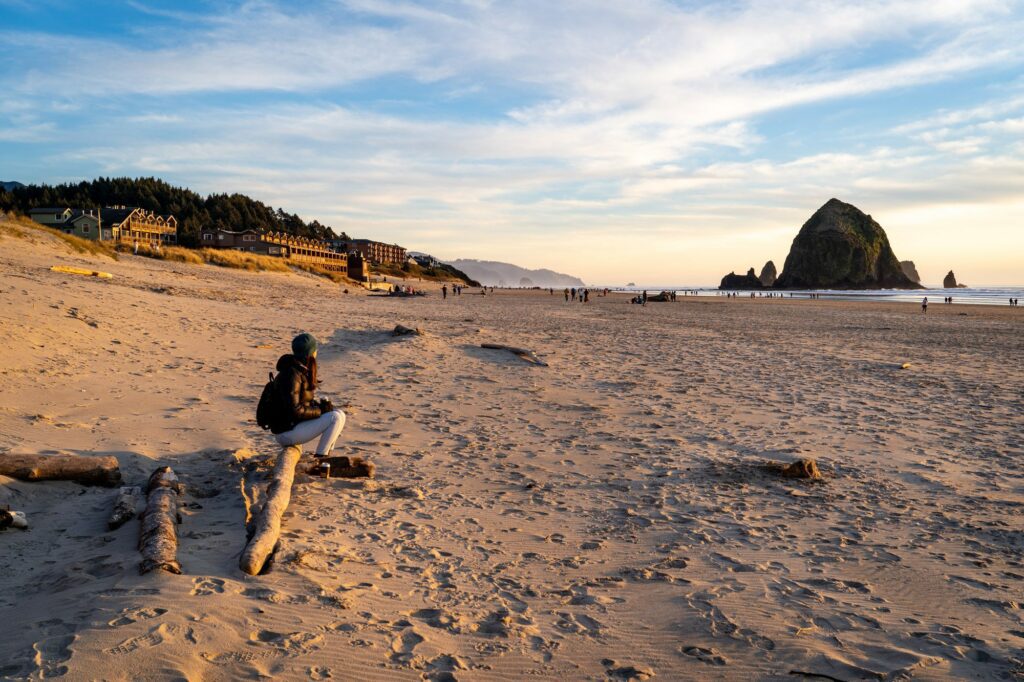
If Astoria is a jumping off point for a broader trip down the Oregon Coast, then chances are pretty good that you’re already heading down to Cannon Beach.
If not, we like Cannon Beach, and think it’s a good half-day to full day excursion from Astoria.
Cannon Beach is about 30-40 minutes south of Astoria.
The town of Cannon Beach itself is kind of touristy and cheesy (not as much as nearby Seaside, though!), but we think the sheer natural beauty of the entire area around Cannon Beach makes it worth a visit.
Plan on a half day for visiting the town and driving to some viewpoints to the north and south, or a full day if you want to tackle one of the excellent hikes nearby.
Here’s what we’d do in and around Cannon Beach.
- Public Coast Brewing: Local beer, and gluten free fish and chips (though you’d never know it!) at the northern end of town. A perfect post-hike refuel stop!
- Haystack Rock: Perhaps the most famous scenery on the entire Oregon Coast, Haystack Rock is a giant sea stack just off of the coast on Cannon Beach that towers over the surrounding area. It’s an excellent sunset location!
- Good Coffee: If you’re in the mood for some good coffee, head to either Insomnia Coffee Co, which uses Dapper & Wise beans, or Sea Level Bakery + Coffee, who use beans from Heart Coffee in Portland (one of my favorite coffee roasters in Portland, for the record). Sea Level is about ten minutes south of the main downtown area, on the way to Oswald West State Park.
- Hug Point: First of all, this is only a low tide place to visit, because when the tide is out, this is a huge stretch of beach with all sorts of fun tide pools that is really only accessible at low tide. Check tides here. The parking lot is small, which means you’ll want to either get here early in the morning (again, depending on tides!) or be prepared to wait for a parking spot if you’re here on the weekend.
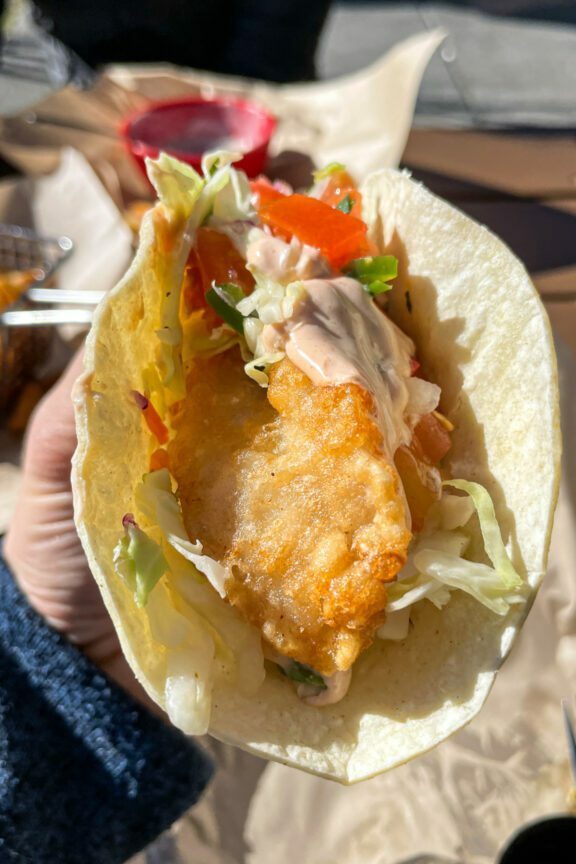
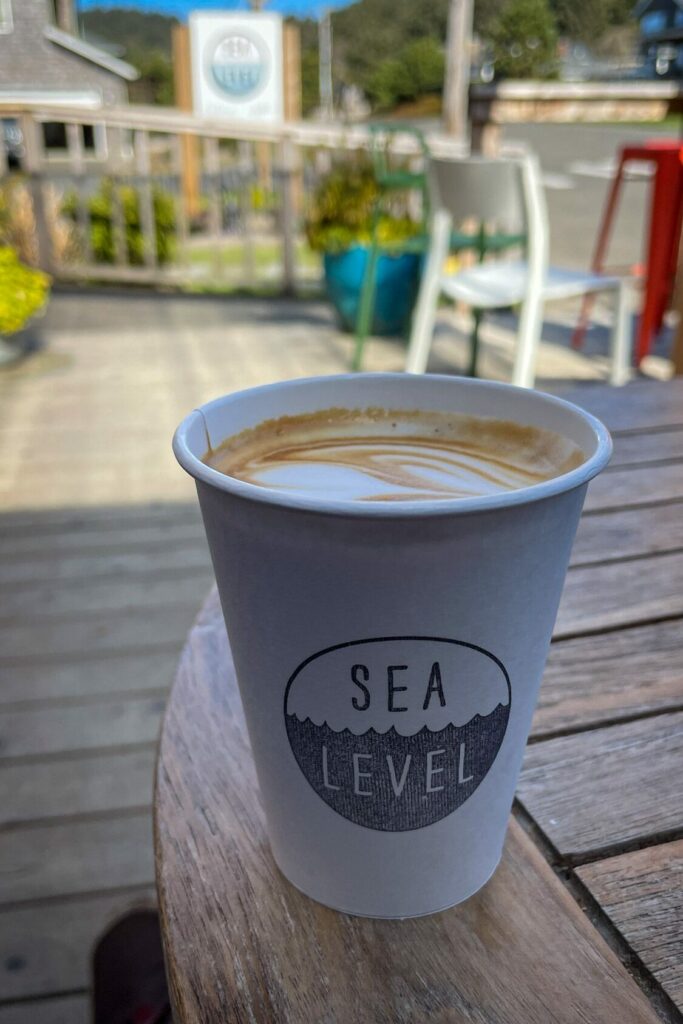
There are also two great Oregon State Parks on either side of Cannon Beach.
To the north – visible from Cannon Beach – is Ecola State Park, where you can get an amazing view of Cannon Beach from above, and hike either the Clatsop Loop Trail for coastal views, or down to Indian Beach for a much less crowded alternative to Cannon Beach.
To the south is Oswald West State Park, which might be our favorite state park in Oregon.
Hike down to Short Sand Beach, where you’ll find surfers of all ages enjoying some of the best surfing on this stretch of the Oregon Coast, and then take a hike up to Neahkahnie Mountain with excellent views of the stretch of coast to the south.
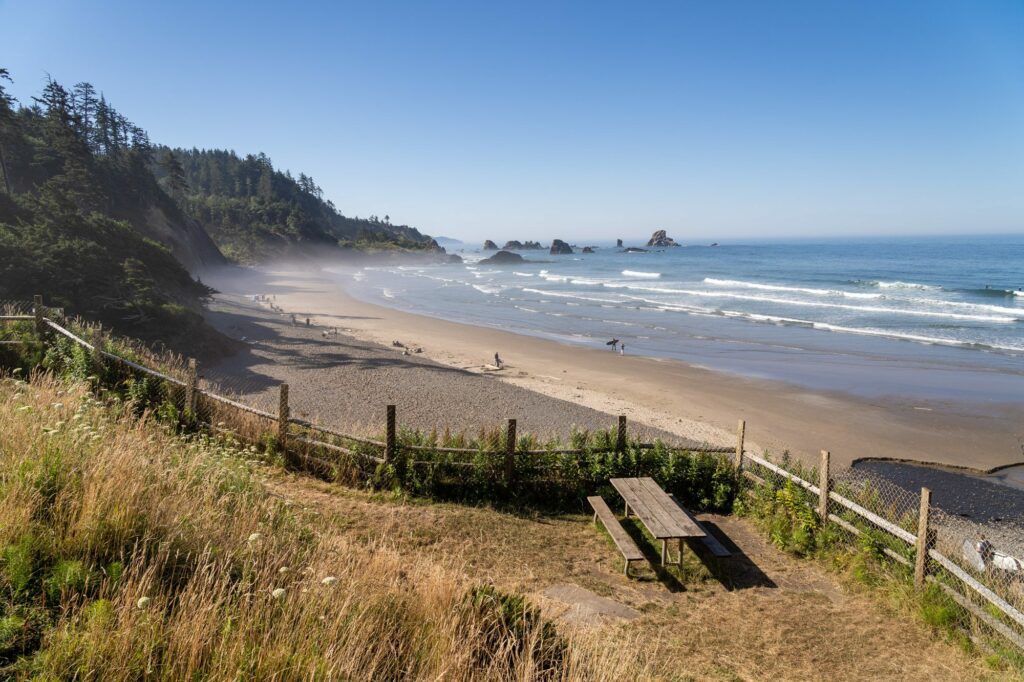
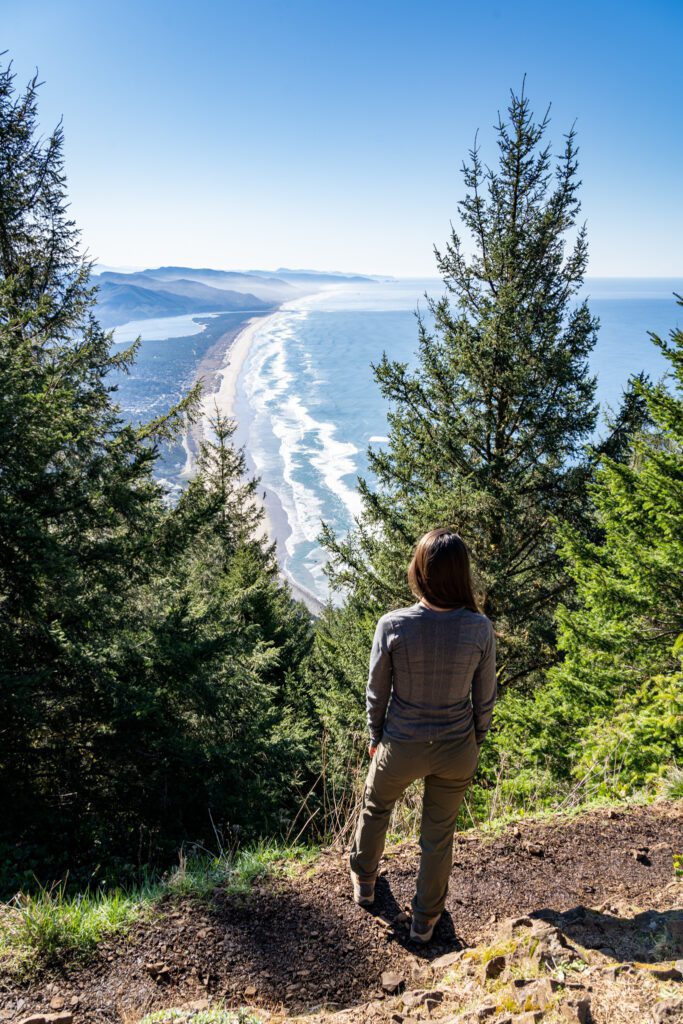
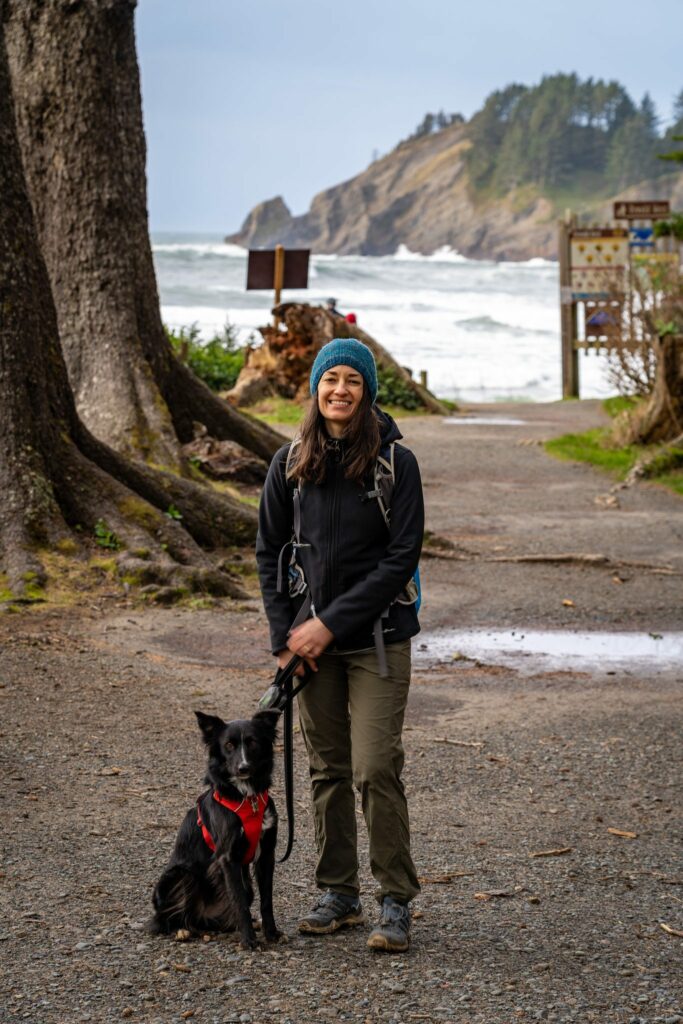
Cape Falcon is another hiking option, but we prefer the views at the top of the mountain to the obstructed views at the end of the cape.
Head Across the Bridge to Cape Disappointment
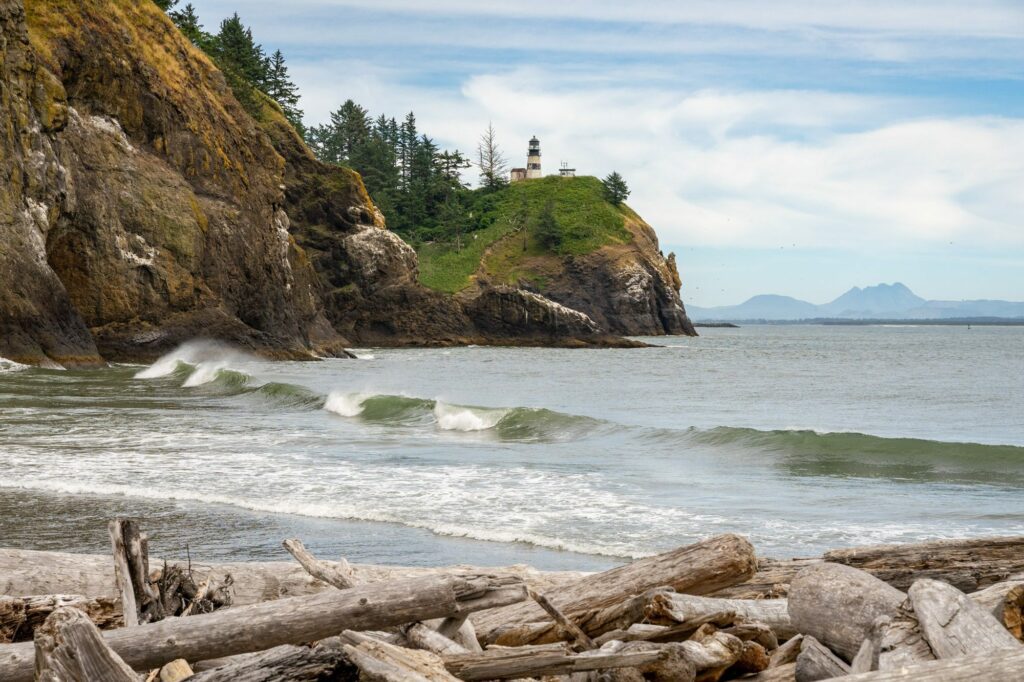
We went up to Cape Disappointment on the Washington side of the river, which means we got to drive across the bridge!
It’s a very different experience from some of the wide, sandy beaches south of Astoria, and we have a few favorites that we think you’ll enjoy.
Hike the North Head Trail out to the creatively named North Head Lighthouse, which is a very ferny journey through a wet stretch of forest. It’s a quick and easy three miles round trip.
Keep in mind that you’re in the forest, so the coastal views don’t come until you arrive at the lighthouse.
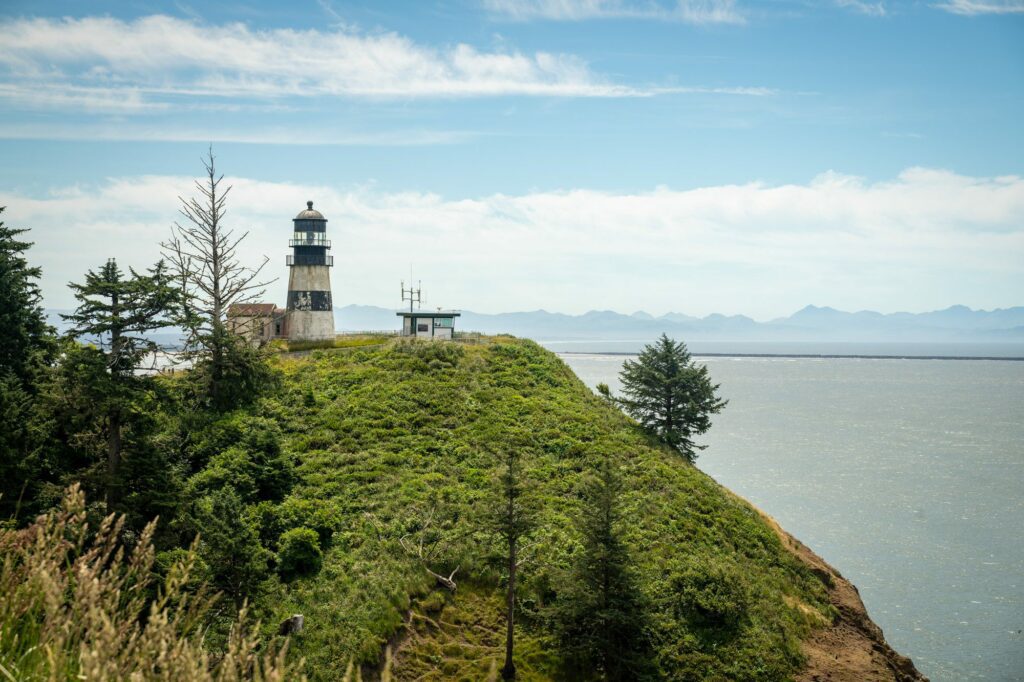
The other short hike we’d make sure to do is the one out to the viewpoint for the Cape Disappointment Lighthouse.
You’ll hug the coast, making your way past the Lewis and Clark Interpretive Center (which is worth a stop) to a viewpoint for the lighthouse. Keep an eye out for bald eagles, which we saw here!
Last, head down to Waikiki Beach (you can walk from the parking lot for the Cape Disappoint trail), where the crashing waves make this basically heaven for surfers, and you’ll get a nice view of the lighthouse from below, with those waves in the foreground and the lighthouse perched up on the cliff above.
